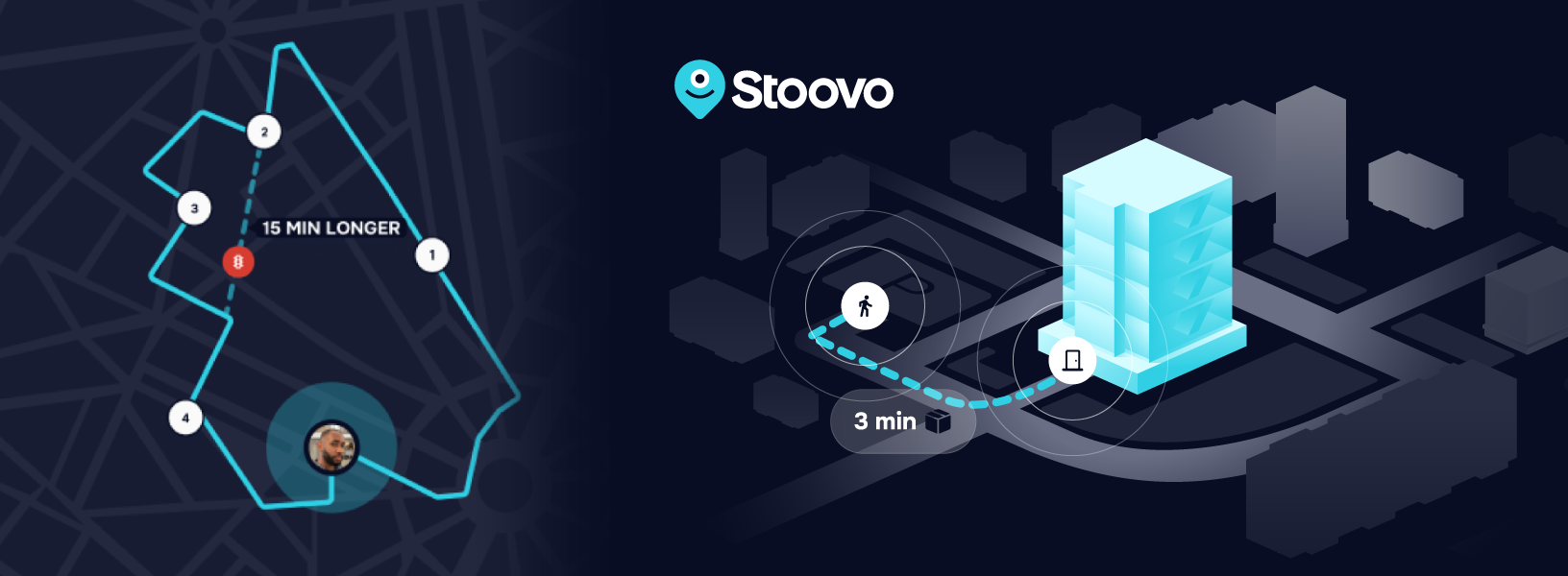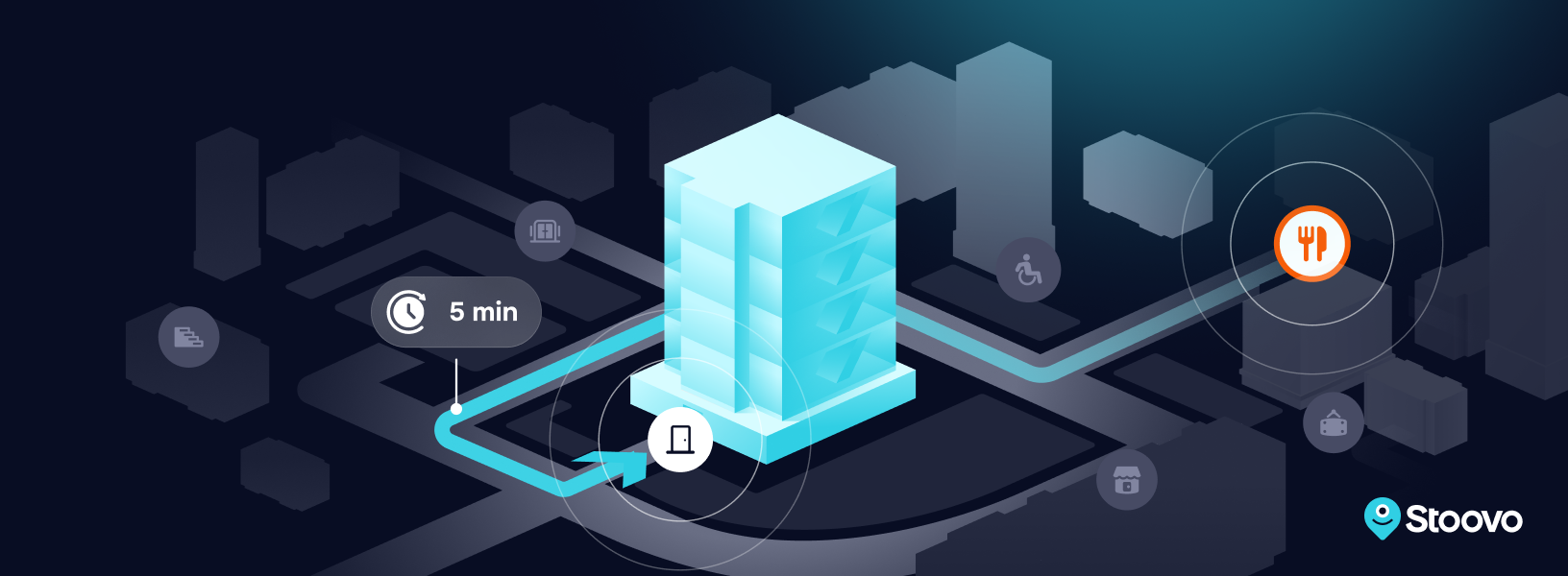What is Route Management? A Comprehensive Guide
Gone are the days of truck driver planning routes manually en route to their delivery. In today’s incredibly competitive delivery industry, dynamic route management processes (and their corresponding software solutions) are the critical tool that increases overall operational efficiency, saves time, and reduces fuel costs.
But what exactly is route management? How can delivery drivers overcome significant challenges to find the best routes? And what are the best route management tools available for route managers working in the office?
In this comprehensive guide, we’ll delve into the importance of route management in the logistics industry and discuss what the future of this dynamic topic will bring.
The Core Components of Route Management

Before going further, it’s essential to acknowledge that successful route management is far more than manual route planning. Route management is a complex subject that traverses planning and optimization through dynamic, real-time changes and finally considers the overall wellbeing of drivers and vehicles to ensure that operational efficiency is maintained.
Route Planning and Route Optimization
Planning and optimizing routes correctly is the most apparent part of route management and an essential piece of the puzzle. Determining the most efficient routes for vehicles to reach their destinations helps keep costs low and delivery times down. The route optimization process involves efficiently allocating resources along complex routes, considering factors such as distance, driver availability, traffic congestion, vehicle utilization, and delivery time windows to minimize fuel consumption and maximize productivity along a route from A to B.
Making Real-Time Decisions
But routes rarely remain fixed as the working day plows on. Navigating variable conditions, such as traffic and weather considerations, is crucial for efficient route management. Using real-time data from the right route management software on traffic conditions and weather forecasts helps route managers make informed decisions to avoid congestion, accidents, or adverse weather conditions. Then, by dynamically adjusting routes based on these factors, a delivery business can ensure the timely delivery of goods or services.
Managing Delivery Operations

As well as all this, driver and vehicle management is another critical aspect of route management. This involves assigning the right driver to the appropriate vehicle, monitoring key performance indicators, and ensuring that vehicles are well-maintained and comply with safety standards. This effective driver and vehicle management contributes to the overall success of a delivery service, enhancing reliability and customer satisfaction.
Route Management Software: Tools & Technologies

With such a complex and ever-evolving scope, route management is a problematic business process to manage. While small delivery operations may attempt to manually build optimized routes using navigation apps and a software solution like Excel, larger operations managing multiple stops and multiple drivers require specialized route management software as standard. In fact, maximum efficiency cannot be achieved without the assistance of the correct tools and technologies.
From comprehensive route management systems that link to integrated ERP systems to the latest mapping technologies – like Stoovo – that provide delivery drivers with incredible visibility when they’re out in the field, route optimization software helps cut costs and reduce time-consuming challenges when they arise in the delivery process. Delivery management and route planning software can encompass the whole delivery system, integrating with a warehousing management system to help workers balance loads and harness vehicle utilization rates, then employing automated route management tools to assign optimized routes, making use of real-time data to find the most efficient route from the warehouse to the customer’s doorstep.
Plus, it’s not just on the delivery side that technologies are changing the game. For customers, improved communication tools and better customer relationship management software help customers program the best delivery time windows for them, reschedule their delivery remotely, or speak directly to a customer service team to resolve any issues. Finally, proof of delivery can be sent out automatically, improving customer satisfaction and helping save time for operators.
When building a route management solution, it’s essential to recognize that one out-of-the-box tool is unlikely to give all the functionality that delivery businesses need. Instead, the best solutions make use of numerous tools at various stages of the delivery process and for various stakeholders.
Whereas an efficient route management system is critical for mapping and creating optimized routes, another tool is needed for customer notifications and yet another for final leg delivery navigation. While a navigation tool is likely to be sophisticated enough to inform drivers of traffic jams, another tool entirely is needed for vehicle capacity management and driver availability. What’s critical is that each of the tools is integrat ed into a route management system that is sustainable and straightforward for stakeholders to use.
ed into a route management system that is sustainable and straightforward for stakeholders to use.
The Benefits of Route Management
It’s clear that the benefits of route management cannot be overlooked.
Cost Savings and Fuel Efficiency
The first and most obvious advantage of a route management system is the reduction in fuel costs and vehicle maintenance that it generates. Driving optimized routes means reduced wear and tear on valuable vehicles, plus less mileage means reduced fuel consumption. In a climate emergency, these factors take on new significance, and more efficient routes mean that delivery routes are more sustainable, have a lower carbon footprint, and are easier on the bottom line.
Improved Driver Productivity

As well as a positive impact on assets, effective route management can help drivers by reducing the stress caused by traffic congestion or unrealistic delivery schedules on multi-stop routes. Happier drivers are safer drivers, plus drivers are more likely to stay in a business that values their time and rejects inefficient routes. This reduces the expensive need to train new drivers – especially significant in a world where qualified delivery drivers are in short supply.
Enhanced Customer Satisfaction
Finally, route management is a critical factor in customer satisfaction rates. Improved communication via customer notifications and in-system messaging means that customers feel in control of the delivery process, anticipate the delivery, and understand when something goes wrong and the delivery is delayed or rescheduled. By keeping customers in the loop, delivery businesses can find delivery windows that work for both parties. Then effective route planning means that the delivery is made easily in the predefined time window.
Challenges & Solutions

Comprehensive route management, important as it may be, does not solve all the challenges in delivery processes. There are numerous challenges to a business adopting route management processes, including the costs of systems, the scalability of a system, and the complexity of appropriate route management software.
Scalability
Building a system that works for your business is fantastic until your delivery team adds on a few new drivers on another schedule, another set of vehicles with different capacities and weights, and extends operations to a new state or territory. Now what?
Often, a significant challenge to any delivery business is the scalability of route planning and optimization systems. While businesses may find it possible to complete their day-to-day operations when their business looks the same, it only needs a few additional variables for things to start to go wrong. Ensuring a system is scalable is one of the hallmarks of successful route management.
Cost Effectiveness
Managing a monthly subscription for numerous route planning tools, plus the labor costs of the workforce behind it all, means that the route management team can see high costs. Unless that team is reducing costs enough to justify their expense, an expensive route management process may be a false economy, actually adding to business costs rather than mitigating them.
It’s critical for businesses to watch their bottom lines carefully, purchasing route management software that fits within a budget and working to optimize routes that reduce fuel costs rather than adding to the businesses growing overheads.
Complexity of Software
Finally, the complexities and ever-evolving nature of route management mean that this methodology is tough to master. Real-time data, increasingly complex algorithms, and vast amounts of historical data points mean that route management is time-consuming and vast. Only complex software can cope with such a mathematically intricate process, and delivery teams need highly skilled personnel to understand, build, and work with such complex workflows.
As well as the technological complexities of route management software, navigating political and legal considerations presents challenges. From one state to the next, various emissions legislations, parking rules, traffic laws, and safety regulations are complex to navigate and comply with, and failure to comply may mean expensive fines and levies that eat into any profits made.
Ultimately, route management is not a process that is straightforward or simple. An effective route management process within a delivery business requires expensive, highly-trained staff and complex technologies, not to mention the foundation of workflows that support a scalable business operation.
The Future of Route Planning and Management

In the future, route management will only become more complex and challenging as the industry builds from its current position.
With the expanding ecommerce industry, customer expectations are changing. Now, next-day or even same-day delivery options are expected, and lagging delivery companies are unlikely to survive. Customers demand products to their doorstep with incredible precision, and online shoppers are unlikely to tolerate late, misplaced, or damaged deliveries for long.
Finally, our post-pandemic world means that consumers shop regularly online for everything. Whereas in the past, shoppers might have made a single purchase for a delivery, now, multiple daily deliveries to the same address are typical; from consumer goods or fresh food to even cash-on-demand, everything can be delivered and is expected to be delivered.
To keep up with this increasing demand, businesses are looking towards new technologies, including autonomous vehicles, drone deliveries, and more. However, these new advancements are not yet available and may never be logistical within densely populated urban areas as regulation, costs, and political pressures are stifling. Nonetheless, increased automation is undoubtedly a future trend that will likely have an impact on route management software performance and delivery route success.
Final Thoughts

In our increasingly delivery-reliant world, managing routes and enhancing the efficiency of delivery operations by having the correct systems in place is absolutely critical. Delivery businesses face squeezed margins and tight time-frames for success, and the process of increasing operational efficiency and minimizing unnecessary costs is, of course, hugely important. Route management is the key to all of this.
That’s why delivery companies and in-field service providers must develop a route management workflow, considering all these factors and more in their performance. The adoption of KPIs, comprehensive software and tools, plus skilled personnel to manage and maintain route optimization workflows is crucial for success and will only become more crucial as time goes on. Ultimately, embracing a route management process within your business is a fundamental step in achieving operational efficiency, and all delivery businesses should have in place a plan to do so.
FAQs
How can I be a good route manager?
It’s possible to improve your skills as a promising route manager by keeping up to date with the latest in route management software and staying abreast of industry innovations. As well as this, improving soft skills such as communication and problem-solving can improve your job performance.
What is the role of a route manager?
A route manager works behind the scenes of a delivery business to plan, optimize, and oversee delivery routes to ensure efficient and cost-effective business or home delivery service.
How can I find the most efficient routes?
Using a navigational or mapping tool, such as Stoovo, is a great way to find the most efficient routes for a delivery service.
What is route optimization?
Route optimization is the process of route planning to find the best route from A to B. This often means finding the route that uses the least fuel, reaches every destination on a multi-stop route within given time periods, and minimizes disruption from traffic congestion, road works, or adverse weather conditions.
What is manual route management?
Manual route management is the process of optimizing delivery routes without using a tool or automated route management software to do so.


